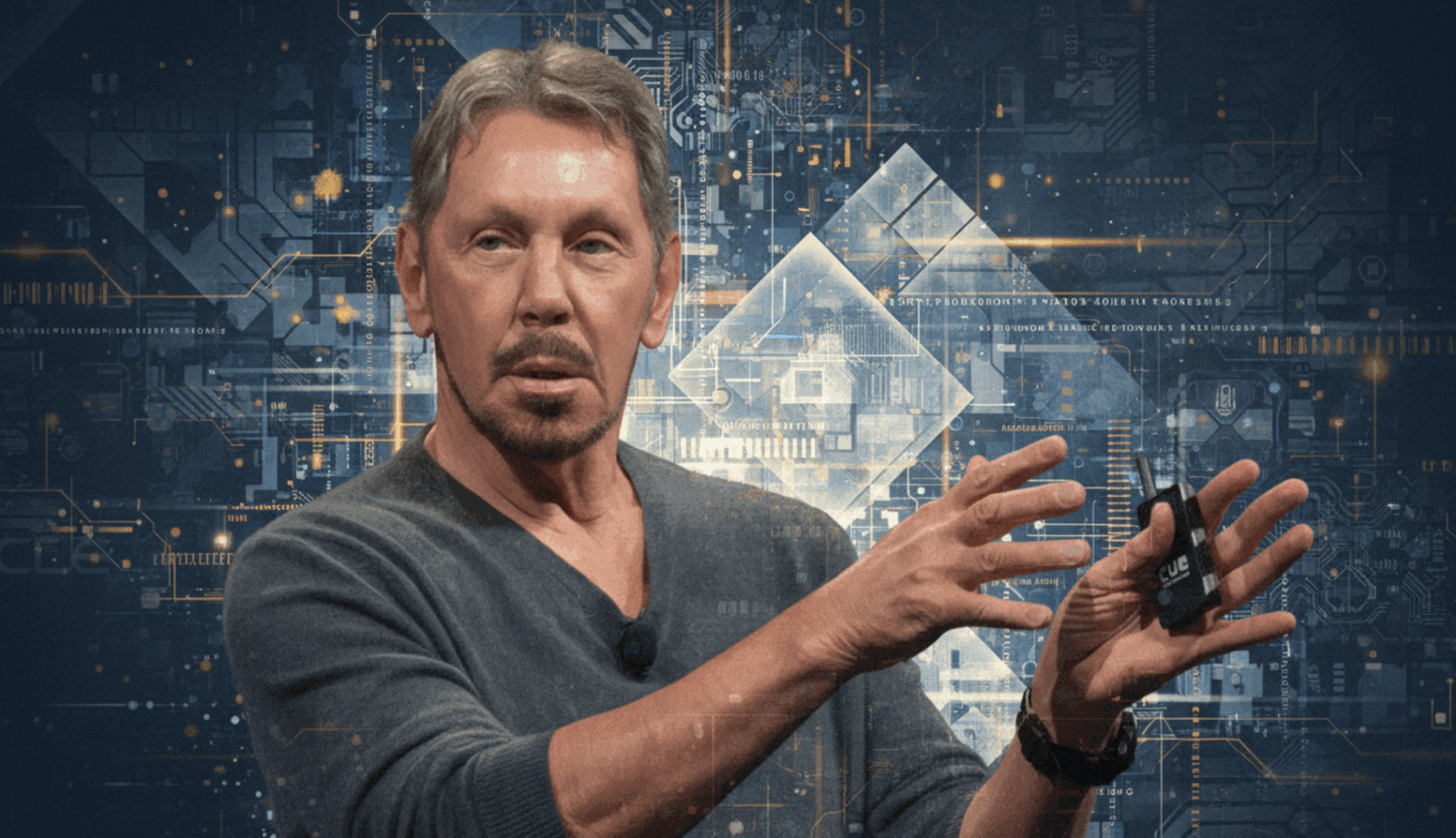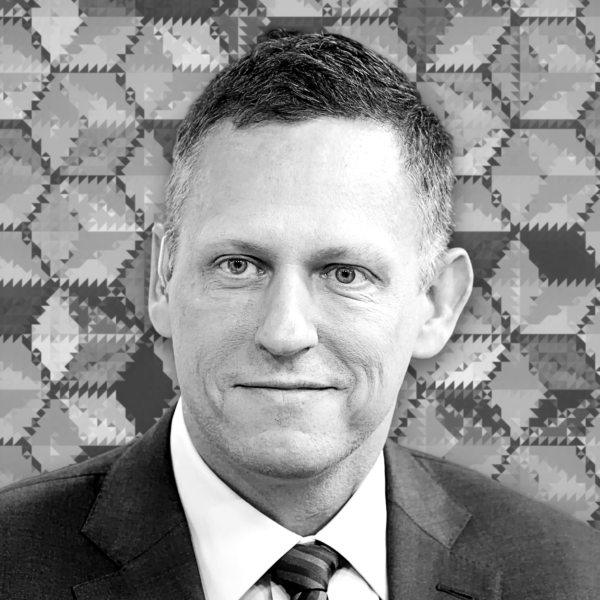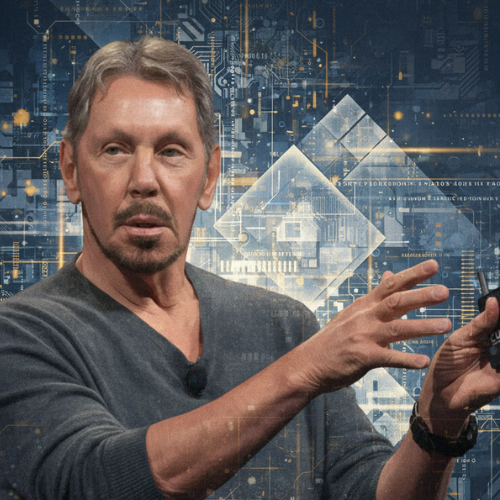
Larry Ellison: The unconventional billionaire and his family office
Lawrence Joseph Ellison is one of the world’s most enigmatic billionaires. As a two-time college dropout and a personal friend of the late Steve Jobs and Elon Musk, he has built a reputation for his bold, unconventional approaches to business and lifestyle. As the founder and former CEO of Oracle Corporation, he has chartered a unique path in the tech industry and beyond. This case study examines his early life, career, the beginnings of Oracle, his philanthropy, and finally, his family office, Lawrence Investments, LLC.

Lawrence Investments, LLC operates as a single-family office overseeing assets exceeding $110 billion for Larry Ellison. The firm is committed to a long-term investment strategy, maintaining a concentrated focus on the core public holdings of Oracle and Tesla. Additionally, it pursues strategic private investments in sustainable real estate, including the restoration of the Hawaiian island of Lanai as well as high-profile technology initiatives.
About the Company
Lawrence Investments, LLC
- Location USA
- Type Family Office
- Founded 1977
Early Life
Born in New York City in 1944 to a single, teenage mother, at 9 months old, Larry Ellison was adopted . His aunt and uncle adopted him after he contracted pneumonia. He was raised in a modest, two-bedroom apartment on the South Side of Chicago. Larry only found out about his adoption when he was 12 years old.
Stuck in a tale of two worlds, his adoptive father, Louis, was a hard man. He worked as a civil servant after losing his real estate business during the Great Depression. Their relationship was strained and often tumultuous. In contrast, his adoptive mother, Lillian, was very caring and loving, and the two were very close.
In 1962, an 18-year-old Larry enrolled to study science and premed at the University of Illinois. He showed such aptitude that he was awarded science student of the year. However, Lillian’s death during his second year caused him to drop out without taking his final exams.
In 1966, an undeterred Larry decided to give academia another try. He enrolled at the University of Chicago, where he was first introduced to computer programming and computing. But after just one semester, he dropped out a second and final time.
Early career
Straight after dropping out, 21-year-old Larry packed his bags and the little money he had and drove to California, with a “head full of code, ambition, and dreams.” Upon arriving in the Golden State, he began working as a programmer in Silicon Valley to earn money. On the side, he would teach rock climbing and do river tours because he was passionate about the environment.
In his programming, he bounced around from job to job until his first wife divorced him for “lacking ambition.” Kicked out of the house, he decided to put his full focus on programming. After various jobs, he finally landed at unicorn startup companies such as Amdahl Corporation and later Ampex Corporation.
Now that money wasn’t an issue, Larry realised that though he was a good programmer, he wasn’t particularly passionate about it as a job. So he decided to build a company that he would enjoy going to work in every morning. He wanted to fill it with friends he liked being around. And his grand ambition was to employ 50 people.
In 1977, a persuasive young man in his 30s, Larry, convinced two of his former Ampex colleagues, Bob Miner and Ed Oates, to start the company. The trio started with a modest investment of $2,00. Larry put up $1,200 from his own pocket and co-founded Software Development Laboratories (SDL). Based in Santa Clara, California, SDL started out as a consultancy firm.
The birth of Oracle
While the details are unclear, the story goes that the Central Intelligence Agency (CIA) became their SDL’s first client. SDL received a project code-named “Oracle” to build a classified database for the government agency.
In a landscape where all other computer companies were building hardware, a curious and contrarian Larry became obsessed with the idea of commercialising a “relational database.” Then it was only a concept pioneered by IBM that the company had not yet brought to market.
Two years later, in 1977, with the blessing of the CIA, the consultancy firm launched its first product and called it “Oracle Version 2.” It was the first commercially available relational database to use Structured Query Language (SQL). For the first time, since the advent of the internet, companies could organise all their information in a private, structured database. Think of a company’s sales records or a university’s student information, and so on. And in a shrewd marketing move, there was no Version 1. That’s because the founders figured customers would be reluctant to buy an initial release. The market embraced the product as a hit.
In 1982, the firm, which had renamed itself Relational Software, Inc., changed its name once more to Oracle Systems Corporation. This move aligned it with its flagship product. In the early 1980s, Oracle rewrote its database in the C programming language. That made it portable across different platforms and gave it a key advantage over rivals tied to specific hardware. In 1986, Oracle went public and was ranked the world’s largest database management company by 1987.
Today, under Larry’s leadership, the company has pivoted to cloud infrastructure and artificial intelligence. It has secured major contracts with AI companies like Sam Altman’s OpenAI. And what started as a three-man show with a goal to get to 50, Oracle now employs over 150,000 employees globally. Larry’s stake in the company has made him one of the wealthiest people in the world.
Larry’s family office
Larry established his family office, Lawrence Investments, LLC, in 1977, the same year he started Oracle. It operates as a private venture and investment firm, primarily serving his and his family’s personal wealth. The firm’s main goal is to manage and grow Larry’s considerable personal wealth. And the majority of it is tied up in his personal stake at Oracle.
Much like when he started working in his youth, his family office functions with a dual mandate. Its first mandate is to preserve and strategically grow Larry’s core public market assets, which include a 35% majority stake in Oracle and a significant investment that makes up 1% in Tesla.
Its second mandate is to make strategic private investments in projects that Larry enjoys. Two notable examples are his work on real estate projects, including the acquisition and development of the Hawaiian island of Lanai. Larry has called the project a “laboratory for sustainability.” Considered a personal friend, he also participated in Elon Musk’s buying of Twitter. Larry bought a $1 billion stake in the social media platform, which has now rebranded as X.
Larry’s family office strategy
- Core holding in Oracle: Unlike many founders who diversify away from their original source of wealth, Larry has maintained a significant stake in Oracle, with approximately 35% of his net worth still tied to the company.
- Strategic tech investments: Larry has made calculated bets on other technology companies. Most notably, he made an early investment in NetSuite (later acquired by Oracle) and staked in companies like Tesla, where he also serves on the board.
- Real estate: Perhaps most distinctively, Larry has allocated billions toward trophy real estate assets, creating not just a portfolio but a personal archipelago of high-value properties.
- Lifestyle assets: Unlike purely consumption-based luxury spending, Larry’s investments in yachts, aircraft, and art often retain or appreciate. Larry’s an avid sailor and participates in professional races.
- In 2025, Ellison and his son David began expanding into media through Paramount Skydance, the merger of Paramount Global with David’s Skydance Media. With CBS and Paramount now under their influence, and bids circling Warner Bros. Discovery (CNN, HBO) and TikTok, the Ellisons are positioning themselves as media magnates. These moves extend Lawrence Investments’ scope into content, culture, and politics, marking a significant diversification from technology and real estate.
Larry’s philanthropy
Not having completely given up his initial goal of studying science and becoming a doctor, Larry’s approach to philanthropy has focused on areas that truly interest him and where he believes he can make a measurable difference.
Before winding down in 2013, the Ellison Medical Foundation was one of the largest private supporters of research into ageing and age-related diseases. Instead of spreading funds across various fields, Larry concentrated his efforts on longevity research and extending human lifespan.
Larry has also committed to giving away 95% of his wealth, though he plans to do it on his own timeline and under his own terms. Currently, his philanthropic endeavours centre around:
- Medical research: He continues to focus on longevity sciences and disease prevention.
- Education: He prefers to give to specific institutions and programs rather than supporting broader educational initiatives.
- Environmental sustainability: His efforts in this area are especially tied to his work on Lanai.
The Oracle of Oracle
Having chosen the unconventional path, Larry’s life has played out much like an epic movie. In fact, in 2010, he was featured in the Iron Man 2 movie, where he played himself as a character called the “Oracle of Oracle.”
As he enters his eighth decade, with his sixth wife, full of vibrancy and vigour, he remains Oracle’s Executive Chairman and Chief Technology Officer, guiding the company’s vision. His ambition is quite simple: to beat Amazon in cloud database.
If one were to sum up his success, Oracle’s soaring stock prices continue to inspire confidence in the company’s vision. Investors clearly see tremendous growth potential in Oracle’s strategic pivot toward AI infrastructure and cloud solutions. Larry’s leadership continues to drive innovation even as the tech landscape evolves. His work is the adventure that drives his life force, creating technology that makes a meaningful difference.
Further Reading

Peter Thiel’s capital stack: A contrarian view for family offices
InvestmentsPeter Thiel is one of Silicon Valley’s most influential and polarising figures. A billionaire investor, PayPal co-founder, and early Facebook backer, he is also the driving force behind Palantir and Founders Fund. Known for his contrarian worldview and libertarian ideology, Thiel has built a layered approach to managing his wealth. His method blends operating companies, […]

From fragmentation to focus: A $200M portfolio transformation
Technology StacksA UK-based multi-generational single-family office managing over $200 million faced challenges managing its complex portfolio spread across multiple continents and assets. As their sophisticated investments exceeded the limits of their operational infrastructure, they partnered with IQ-EQ to develop a tailored solution. This case study outlines how IQ-EQ helped them shift from a reactive to a […]

The hidden drains on family office portfolios and how to stop them
Listed Stocks & BondsWhen Greenlock started working with funds, a single-family office client asked them to audit their structure. At first, everything looked standard — until they stumbled upon a curious share class. The minimum investment was just $10k, designed for plain-vanilla retail investors with the highest regulatory protection and enormous embedded retrocessions. Clearly, it was not a […]

Larry Ellison: The unconventional billionaire and his family office
LeadershipLawrence Joseph Ellison is one of the world’s most enigmatic billionaires. As a two-time college dropout and a personal friend of the late Steve Jobs and Elon Musk, he has built a reputation for his bold, unconventional approaches to business and lifestyle. As the founder and former CEO of Oracle Corporation, he has chartered a […]